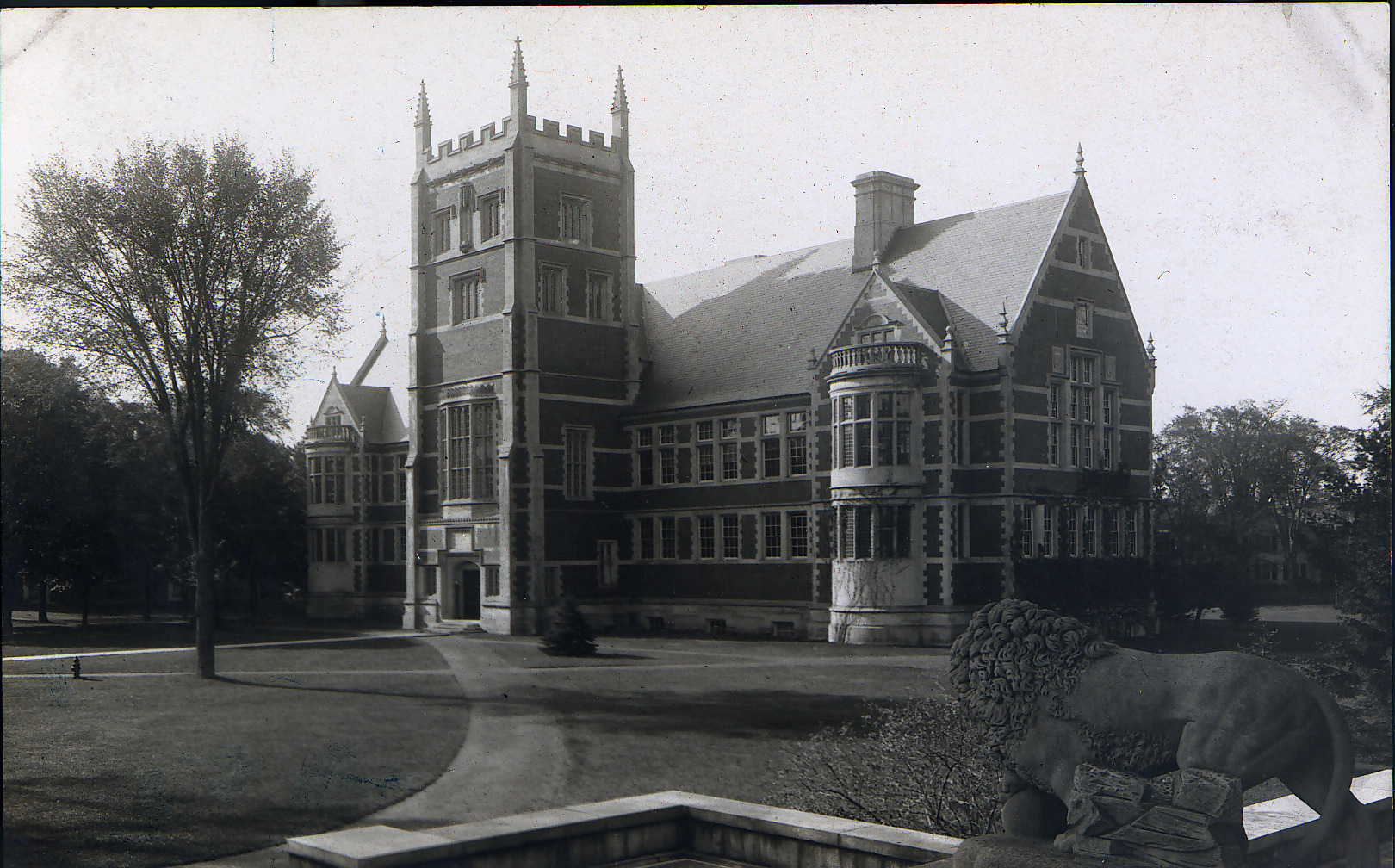What’s in a Name: Hubbard Hall
February 21, 2025
 Courtesy of the George J. Mitchell Department of Special Collections & Archives
Courtesy of the George J. Mitchell Department of Special Collections & ArchivesWhether looking for books, ghosts or gargoyles, Hubbard Hall has everything. In its almost 122 years on campus, it has seen multiple transformations, from library to offices.
Hubbard Hall is named after General Thomas Hamlin Hubbard, Class of 1857, who funded the project and was praised as one of the most significant elements of the early college legacy. He is also credited with convincing Edward F. Searles to fund the construction of Searles Science Building.
Hubbard was opened in 1903 under the presidency of William DeWitt Hyde as part of his project to build out the primary quad, which included the construction of Searles and the Walker Art Building, now the Bowdoin College Museum of Art. The building reportedly cost $300,000 in May 1901, which, adjusted for inflation, would be equivalent to roughly $11 million today.
The building was the first library built for the College. Before its construction and well after it, most of the books around campus were cataloged and managed by individual departments across campus, but many were stored in Hubbard. This concentrated library system was inspired by German universities, which started using more centralized library systems.
In her book, “The Architecture of Bowdoin College,” Patricia McGraw Anderson discusses the specific architectural features that make Hubbard’s gothic style unique; she describes it as a composite of 17th-century Gothic architecture and traditional high academia styles seen at other universities like Harvard and Oxford.
“Note the classically balustraded oriels that project so handsomely on the east and west beside the tower. The Gothic gables above the windows are crowned by baroque curved pediments. The finials of the gables keep wry company with the bosses and crockets that adorn the tower along with one lone gargoyle. The mixture, however, is comfortable,” Anderson writes.
The gargoyle is a central figure atop Hubbard, particularly now, with its spout flowing with a long icicle.
“Made of Indiana limestone, it is a true gargoyle because it has a waterspout. A figure without a waterspout would be a grotesque. The original gargoyle was removed in 2004 because of cracks caused by freezing water. A replica (also of Indiana limestone) was installed in 2007,” John Cross, resident Bowdoin College historian and secretary of development and college relations in the office of stewardship programs, wrote in an email to the Orient.
The building is known for more than just its haunting exterior figures, as it is a prominent stop on the Haunted Bowdoin Tour created by David Francis, a senior interactive developer in Information Technology (IT). Under the title “Bowdoin’s Deathtrap,” Francis exposes Hubbard’s deadly history with three deaths recorded in the building to date. In the 1920s, a government professor slipped on ice on the front steps and died from the injuries. Less structurally dependent, an economics professor and an IT employee both passed from heart attacks in their Hubbard offices.
It wasn’t until 1965 that Hawthorne-Longfellow Library (H-L) replaced Hubbard as the central library on campus. At that point, the Peary-MacMillan Arctic Museum was moved to the first floor of the building, and the government and legal studies and economics departments took over. The books that remain in Hubbard in the economics library, the Shannon Room and the Pickering Room are not circulating and mostly contain the private collections of professors and student honors projects; this information was collected thanks to an eager question posed to the Bowdoin Orient in October 2023.
By comparison to Hubbard, H-L was met with some disdain among the pages of the Orient when it was first constructed. In the October 8, 1965 issue, a sarcastic anonymous letter to the editor expressed frustration with the open concept of the study spaces as compared to Hubbard, muddling the distinction between study and conversation areas. The letter also expressed some frustration about the plumbing.
“In addition, the plumbing is so thoughtfully constructed that the flushing of a toilet reverberates across the stacks, making a delightful punctuation mark to one’s Ec reading. I am not despondent, however. In sixty years, the Hawthorne-Longfellow Library will be outgrown, and Bowdoin can look forward to another, marvelously improved, designed-with-the-student-in-mind library,” the anonymous letter read.
Of course, this 65-year time limit is almost up, and H-L still stands. The last significant renovation was the connecting of H-L and Hubbard through the stacks, which happened in 1982. It was at this point that underground excavation began to connect the two buildings and create the modern Media Commons.
Most recently, the Peary-MacMillan Arctic Museum moved from the first floor of Hubbard to the new John and Lile Gibbons Center for Arctic Studies, opening up space for the new first-floor study area. The future of Hubbard remains unknown, but its stately structure looms large over the Main Quad and likely will for years to come.

Comments
Before submitting a comment, please review our comment policy. Some key points from the policy: